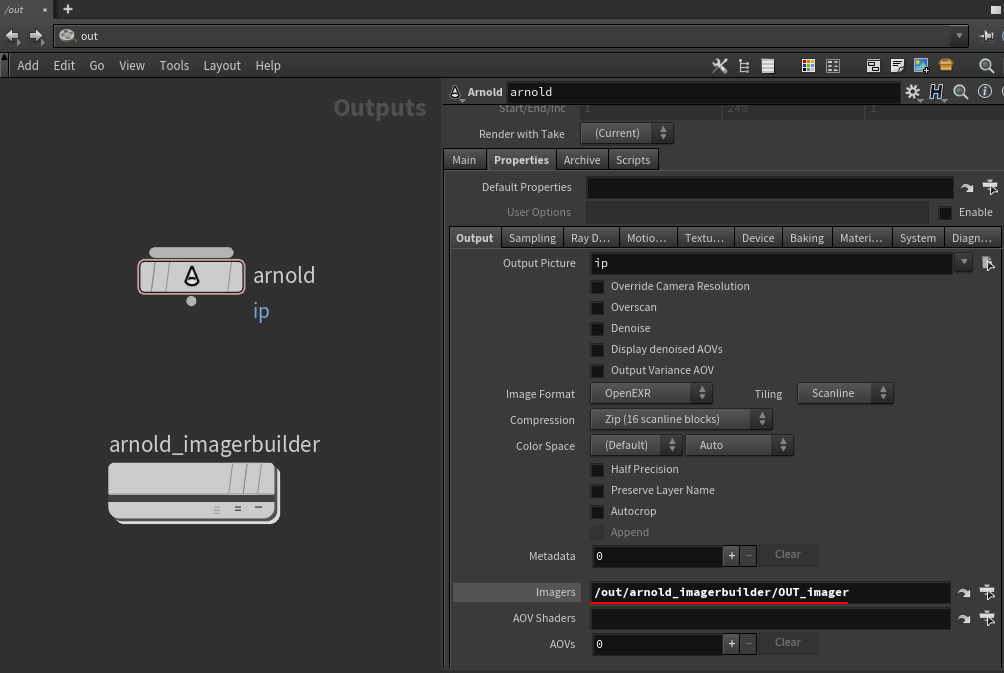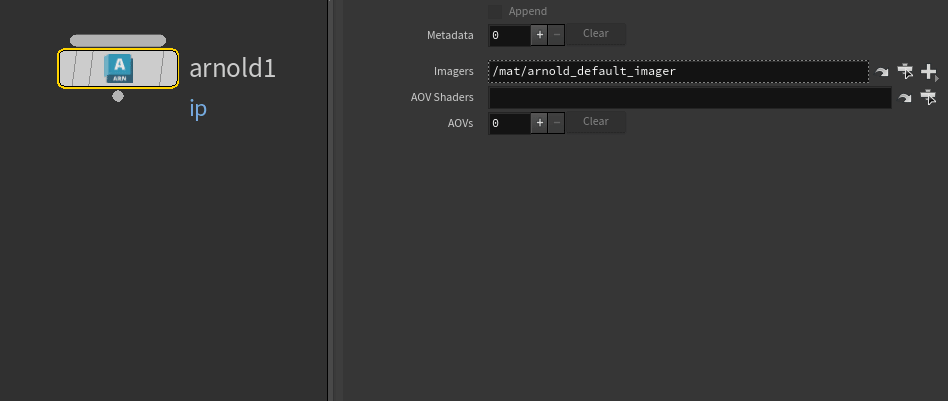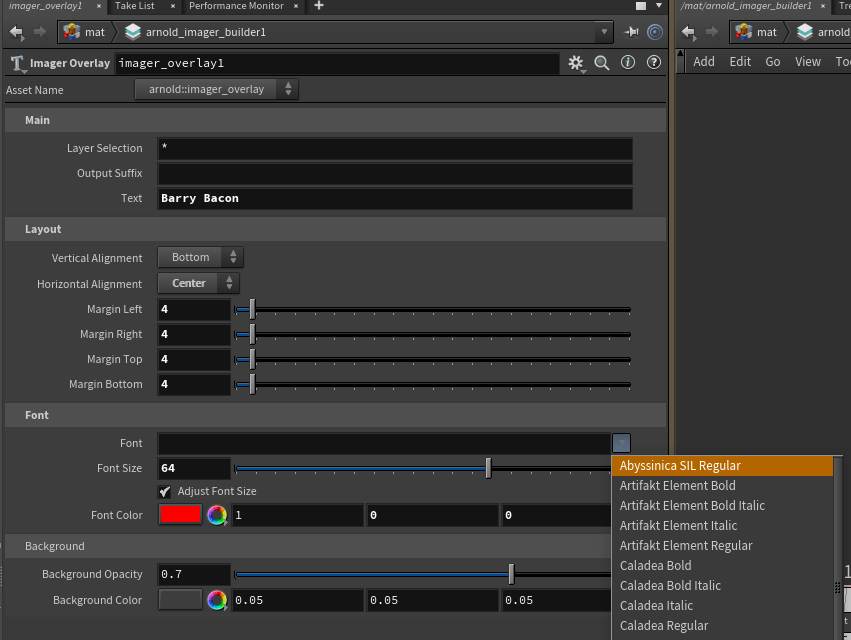Imagers - Arnold for Houdini
| Further Reading |
|---|
| See also Post Processing with Imagers in the Arnold User Guide |

arnold_imagerbuilder referenced on the Arnold ROP
Post-processing nodes called imagers operate on pixels before the output driver. Imagers can be chained together.
Important:
The Intel ® Open Image Denoiser imager (OIDN) is added by default to new scenes.
Note:
Known limitations:
- Currently, Arnold refreshes the IPR when a new imager is added. It is, therefore, recommended to add imagers before starting an IPR session.
- Denoiser imagers should be applied before post-processing imagers if the post-processing is introducing new features in the image (ex: bloom).
- You should apply the imager_light_mixer before any denoiser imagers, as light AOVs won't necessarily be denoised by the denoiser.
- Writing imager output to separate AOV is available only in multi-layer Arnold drivers (e.g. EXR) and when rendering to the Picture Viewer, but not supported by single-layer Arnold drivers (e.g. jpeg, png, etc).
The following post-process imagers are available below:
- imager_arnold_denoiser
- imager_color_correct
- imager_color_curves
- imager_denoiser_oidn
- imager_denoiser_optix
- imager_exposure
- imager_lens_effects
- imager_light_mixer
- imager_tonemap
- imager_white_balance
ROP Imager Preset menu
The Imager parameter on an Arnold ROP has a preset menu to conveniently create imagers. It creates an imager network for the selected imager type, and gives you a quick starting point (reset the parameter to the default values to restore the default imager).

Overlay

These settings allow you to add custom information to the rendered image as an overlay, similar to the Watermark effect.
